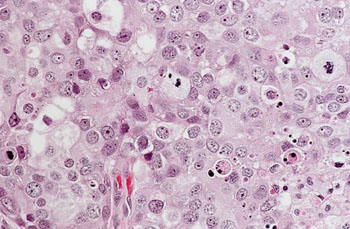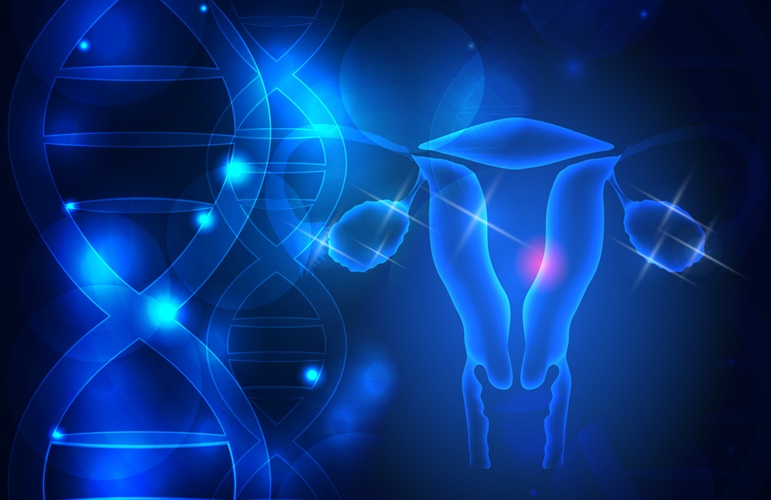Microsatellite Genotyping Reveals Signature in Breast Cancer Exomes
By LabMedica International staff writers
Posted on 24 Jul 2014
Several novel markers have been pinpointed in breast cancer (BC) patients that may not only reveal risks for the disease, but may yield therapeutic benefits as well. Posted on 24 Jul 2014
Microsatellites are repetitive DNA regions that occur throughout the genome, and variations within microsatellites can affect cellular function through mechanisms including promoting altering protein sequence and affecting gene regulation.

Image: Histopathology of high grade invasive ductal carcinoma of the breast (Photo courtesy of Johns Hopkins University).
Scientists at Virginia Tech (Blacksburg, VA, USA) computed the genotypes of microsatellite loci found within 249 ethnically matched healthy female germlines, 656 BC germline exomes, 689 BC tumors (656 matched to the germline samples), and 212 healthy male germlines from exome sequences that were available. The genotypes at these loci created a profile used as a risk assessment tool for classifying independent sets of the healthy or BC exomes.
The team applied their microsatellite genotyping pipeline to nearly 50,000 microsatellite loci from BC and disease-free females and identified 55 loci at which the frequency of nonmodal genotypes was statistically significantly different between the two populations, of which 30 showed a risk ratio below 0.6, while 25 had a risk ratio greater than 1.3. The overwhelming majority of exomes classified as cancer-like did not carry any known BC-associated mutation. An assay consisting of these 55 loci could be clinically informative with a sensitivity of 88.4 %, which exceeds current test performance, while the specificity is about two fold which would be expected, given that 12 % of the healthy female population will be future BC patients.
Natalie Fonville, PhD, a geneticist and coauthor of the study said, “There is still a lot we can learn from looking at the human genome and how it can be affected in ways that may be associated with disease. This study is the first of many in which we are engaged that identify subtle genomic changes which together may add up to cancer risk.”
Michael B. Waitzkin, JD, the chief executive officer of Genomeon LLC (Floyd, VA, USA) to whom the technology has been licensed, said, “The use of microsatellite variations as diagnostics has the potential to transform the way cancer and other heritable diseases are diagnosed and treated. This technology is a very exciting example of the possibilities for translating academic discoveries into clinical use.” The study was published in the June 2014 issue of the journal Breast Cancer Research and Treatment.
Related Links:
Virginia Tech
Genomeon LLC









 Analyzer.jpg)




